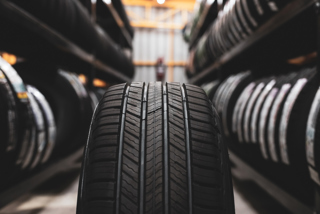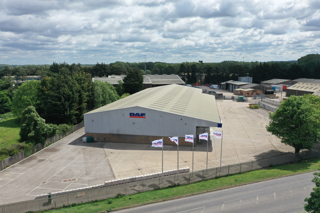Some take the telematics combined with rewards route, others feel that ‘stick’ works better than the ‘carrot’ when trying to get drivers to check their vehicles

Influencing driver behaviour can be a fleet manager’s toughest challenge and attendees at the Fleet News Awards finalists roundtable, sponsored by Škoda, have all been deploying different methods to tackle it.
Many are using telematics, in conjunction with rewarding the best drivers or those who have improved their driving, to reduce accident rates.
When it comes to vehicle checks, some are having to adopt a ‘stick’ rather than a ‘carrot’ approach although the utopia would be company car drivers actually wanting to perform the checks themselves.
Who is using telematics and what success have you had?
Graham Short, fleet manager, Zip Water (UK): We’ve had quite a lot of success from installing telematics. We operate 122 vehicles, 66 of which are vans.
We partnered with TomTom. It has a system called OptiDrive which gives a driver score based on idling, harsh braking, harsh steering and speeding, among other things. It produces a score out of 10 and it produces a red, amber, green score, which you can adjust.
We linked it to the employees’ objectives. Each employee has five objectives. They can discuss four with their manager but one of them has to be their driving performance. Their objectives can lead to a bonus based on a percentage of their salary so if they can get their 20% objective of the driver score moving in the right direction they can gain financially. Over the past 12 months it’s certainly brought our incident rate down. We had three insurers wanting to quote for our business and we saw a reduction in premium of 15% so that has been a fabulous tool for me and it’s managed itself just by communicating with drivers.
Does anyone else reward drivers for good driving?
Stuart Wiseman, group fleet manager, Nationwide Window Cleaning: We have a rewards system but it’s not cash-based. For example, we give top drivers each month tickets to a show or to a football match. When I came to the Fleet News Awards a few years ago I brought two of my drivers with me. That was their reward for doing really well. We’ve found that works and they enjoy it because they don’t know what they are going to get.
What challenges do you have when using telematics?
Jo Hammonds, group fleet manager, Mears Group: The sheer amount of data we are getting. We are getting more than half a million journeys through our telematics units and I’ve got about 85% of my commercial fleet drivers with telematics on so even just trawling through that data and trying to get something meaningful out of it is challenging.
One of our branches did 25,500 journeys in January. If I sent all that to the manager would the manager look at it? No. We’ve got to give him his top five offenders or top five idling or top five low mpgs so it’s just picking the right bits of data.
David King, group fleet director, Interserve: There is a science and an art of pulling different data information points together to a get a profile of where your high risk or high mileage drivers are. I’ve just employed a business analyst to pull in the information we’ve got such as accidents, points on their licence, spend on maintenance and tyres, telematics data and fuel card data.
We’re doing a lot to try to identify that group of drivers and see how we can support them. One of the biggest issues we have is they don’t see themselves as professional drivers. You talk to a HGV driver, they are a professional driver delivering whatever. Talk to the van drivers and they are electricians or whatever, they just happen to drive a van.
How do you make sure drivers do vehicle checks?
Jo Hammonds: To log their business mileage they sign a disclaimer on the website every month that says ‘I check my car’. I’ve got the statement that says ‘he signed it’. It covers driving licences as well. The van drivers are trained in check sheets, checking their tyres, checking their tyre pressures because we hammer it into them.
Dale Eynon, head of Defra group fleet services, Environment Agency: We went to a workshop about occupational road risk and we were having conversations about the very same thing. It was about how do we change that behaviour so somebody wants to do that check. Because they think that safety is important, because they think their role is important. It’s a massive issue because we’ve just done signed checklists but we’re trying to change that behaviour, trying to do some psychology around it to say ‘what is it that makes someone want to do that safety check?’.
Martin Gay, contract hire and leasing manager – North, Škoda UK: Every Saturday morning my car gets checked because I take my family out in that car. It’s a cultural thing. A lot of people don’t think of it like that.
Stuart Wiseman: Van drivers are good at the vehicle checks. We have a daily check and a weekly check and they do get audited. I know it’s a tick box exercise but you can see they do it.
Jason Plummer, senior manager, Panasonic Europe: We don’t have any vans, we only have cars. We almost do the checks for them so we have regular checks in our car park with the tyres, we have people at the barriers checking vehicles as they come in.
And if they do find something wrong with their vehicle – a bald tyre, for example – they get a £200 fine. We can penalise them and we can penalise them in various different ways. You get a certain number of warnings. I don’t think you can ask them to sign every month to say ‘yes, I’ve checked my car’ because I know that at some point someone will come back to me and say ‘so and so has had an accident, he’s never checked his car’. You know he hasn’t done it and you’ve got no proof he’s checked it so I think if you did have an issue I don’t think that form would carry any weight.
How do you capture mileage?
Graham Short: TomTom produces a couple of apps which I was able to get the car drivers to use because they were still submitting mileage claims on a spreadsheet. Mileage submission from drivers is now HMRC compliant, it’s robust.
It’s very easy for the drivers because they have a privacy button in the vehicle which they press so they can define private versus business mileage.
They can look into their app, they can just check the journeys to make sure they’ve remembered to press the button at the right occasion. It gives the private and business mileage split and they can submit their monthly mileage in seconds so that’s been a bit of peace of mind for me as well.
Jo Hammonds: We went for a GPS dongle, we didn’t go for telematics with cars and we went to a private mileage system where the only way we would allow business miles to be claimed was if we had a GPS trace of the journey they did. If it’s not a GPS traceable dongle journey you can’t claim it. Therefore you’re going to pay for the journey yourself. It may be a bit draconian but it does work.




















Login to comment
Comments
No comments have been made yet.